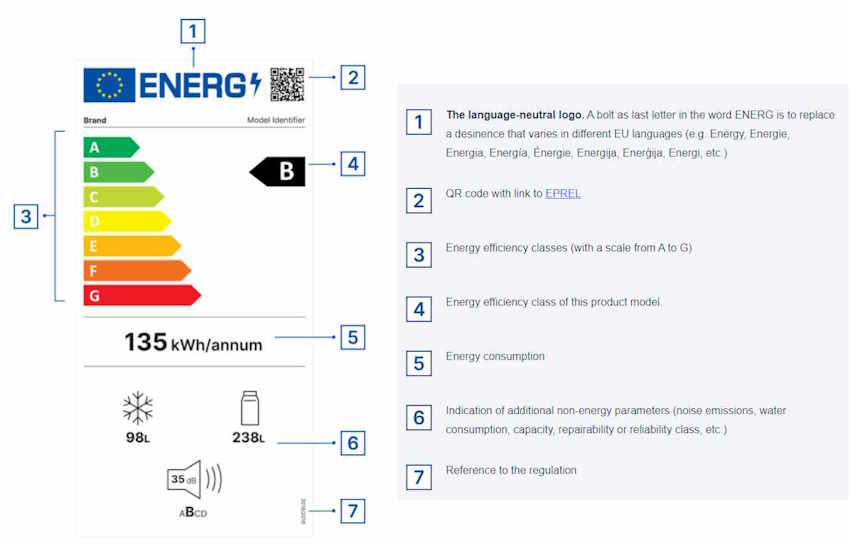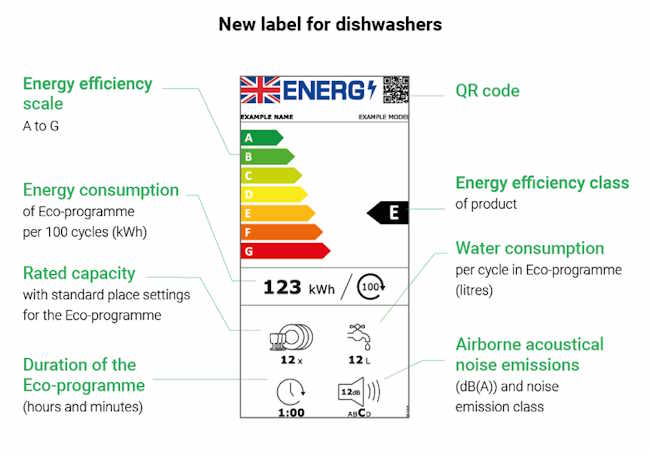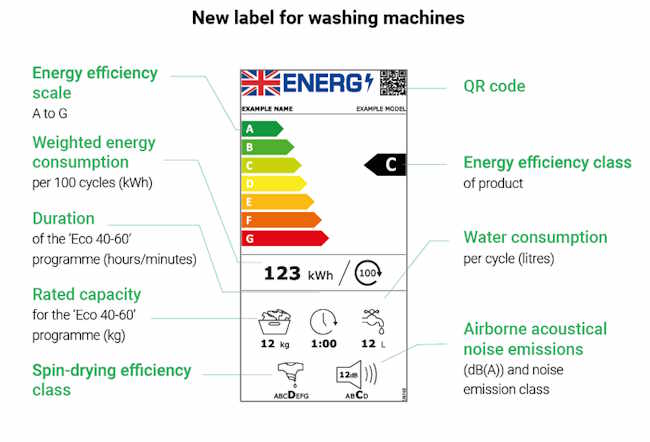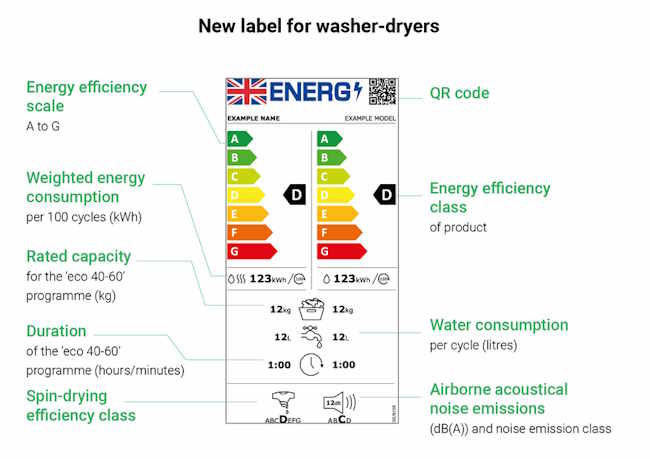The energy label is designed to show information about the power consumption and energy efficiency of a product.
Below is an illustration of the standard European Energy Label
and an explanation of what the various symbols and numbers indicate:

Essential features of the new label
All products feature the new, consistent scale.
The highest class is 'A'.
A QR code on the energy label allows consumers, professional buyers and retailers to access useful, up to date and product information.
Which products are affected?
domestic refrigerators and freezers*
wine storage refrigerators
washing machines
washer-dryers
dishwashers
televisions and electronic displays
light sources
*A completely new label is being created for commercial refrigerators and freezers, but this will only be relevant for the professional retail sector.
Purpose and benefits
The energy label for products has supported consumers in the search and selection of energy efficient products for more than 25 years. The label has driven the development of innovative efficient products dramatically reducing the energy consumption and costs of appliances.
However, the system used until early 2021, based on an A+++/G labelling scheme, had become less effective. The mixed label scale involving many "+“ was no longer transparent and the majority of products on the market were already placed in the 2 – 3 top classes - making it difficult for consumers to distinguish the most efficient products.
The new scale, covering A-G ratings, is simpler to understand for consumers and encourages manufacturers to continue producing energy efficient appliances.
Purpose and benefits
The energy label for products has supported consumers in the search and selection of energy efficient products for more than 25 years. The label has driven the development of innovative efficient products dramatically reducing the energy consumption and costs of appliances.
However, the system used until early 2021, based on an A+++/G labelling scheme, had become less effective. The mixed label scale involving many "+“ was no longer transparent and the majority of products on the market were already placed in the 2 – 3 top classes - making it difficult for consumers to distinguish the most efficient products.
The new scale, covering A-G ratings, is simpler to understand for consumers and encourages manufacturers to continue producing energy efficient appliances.
There are now specific labels for each product type.
The examples below are the labels used in the UK. Other areas may differ slightly.







